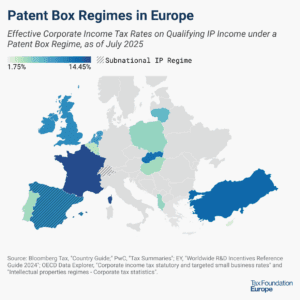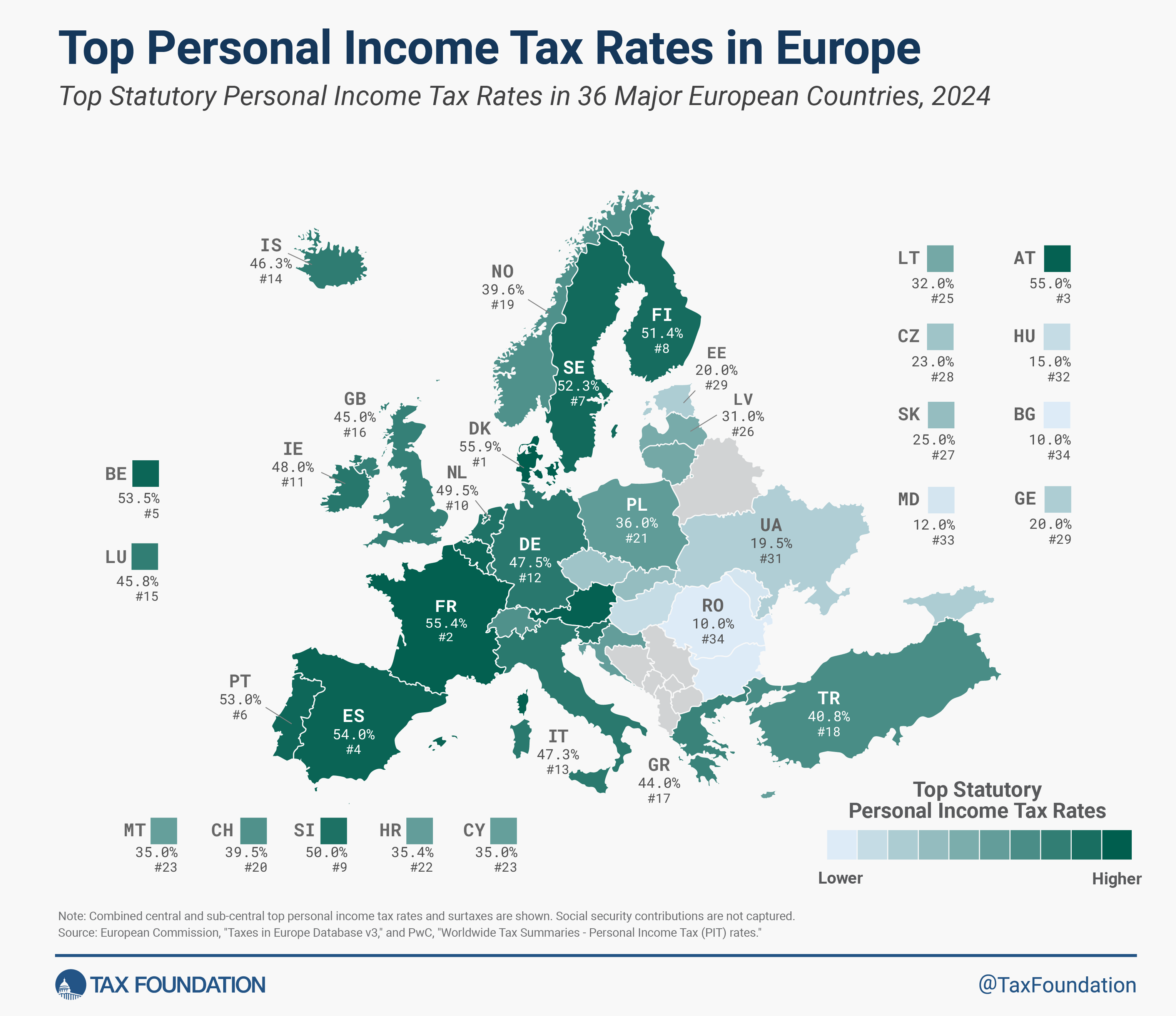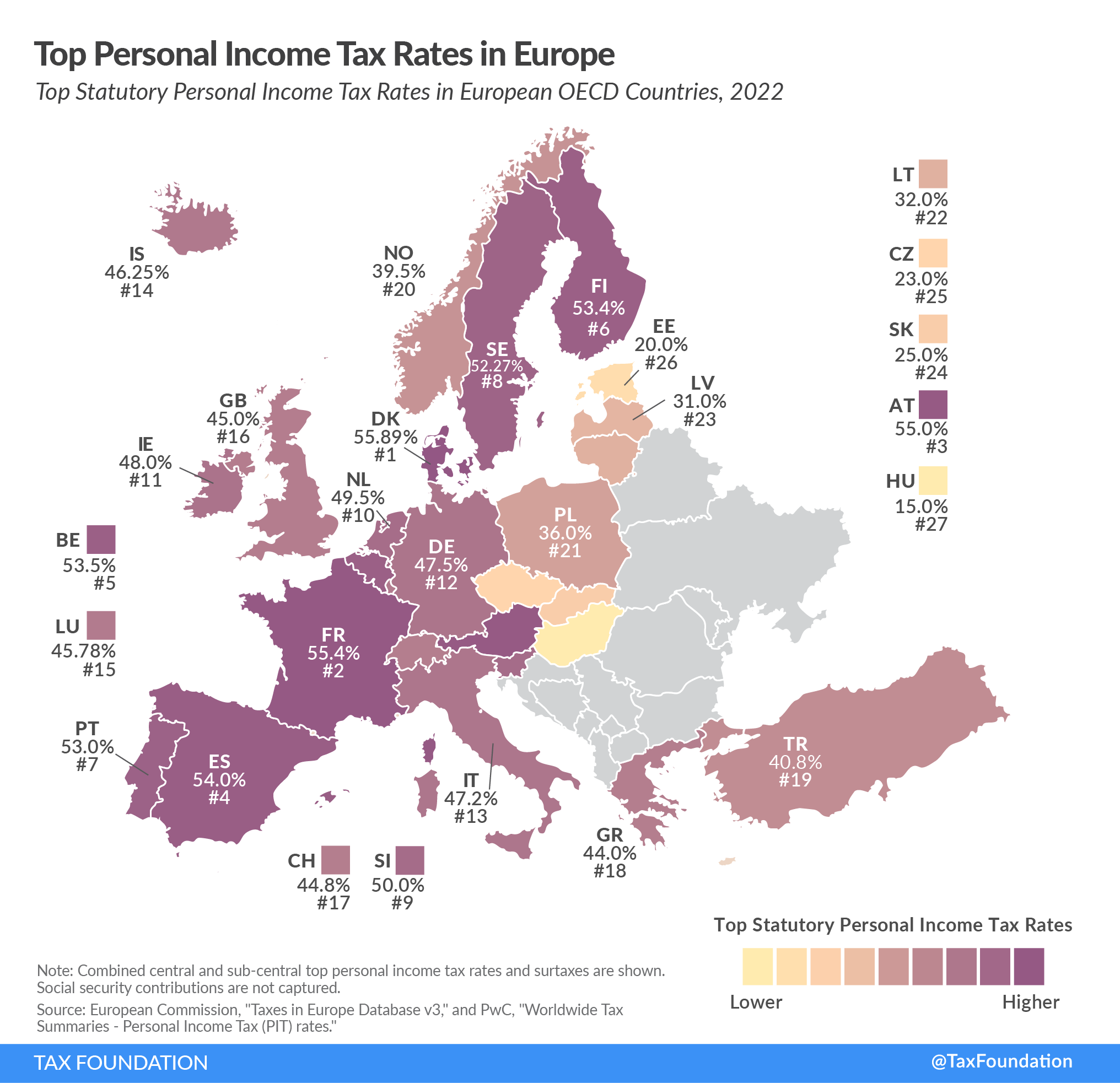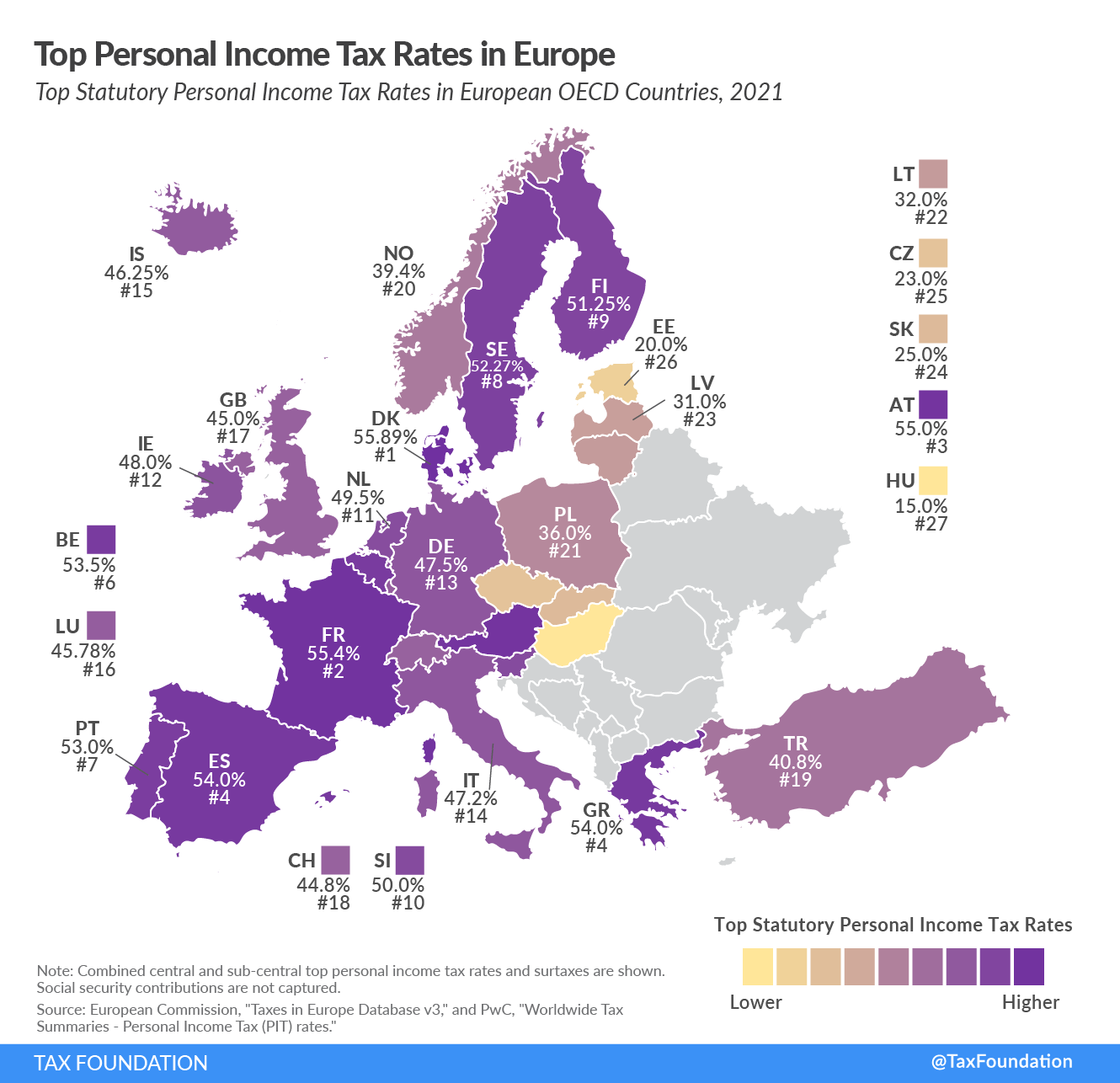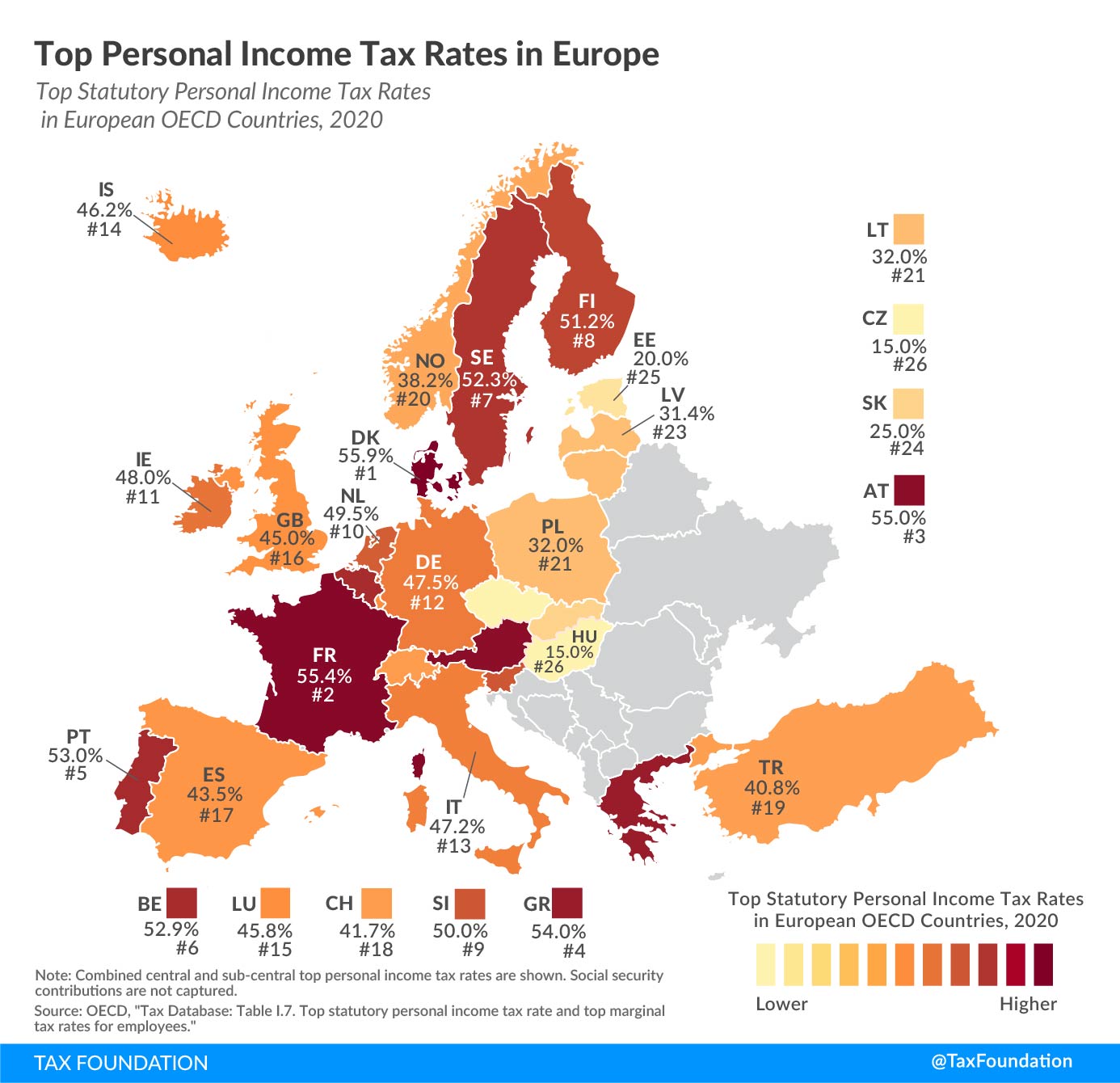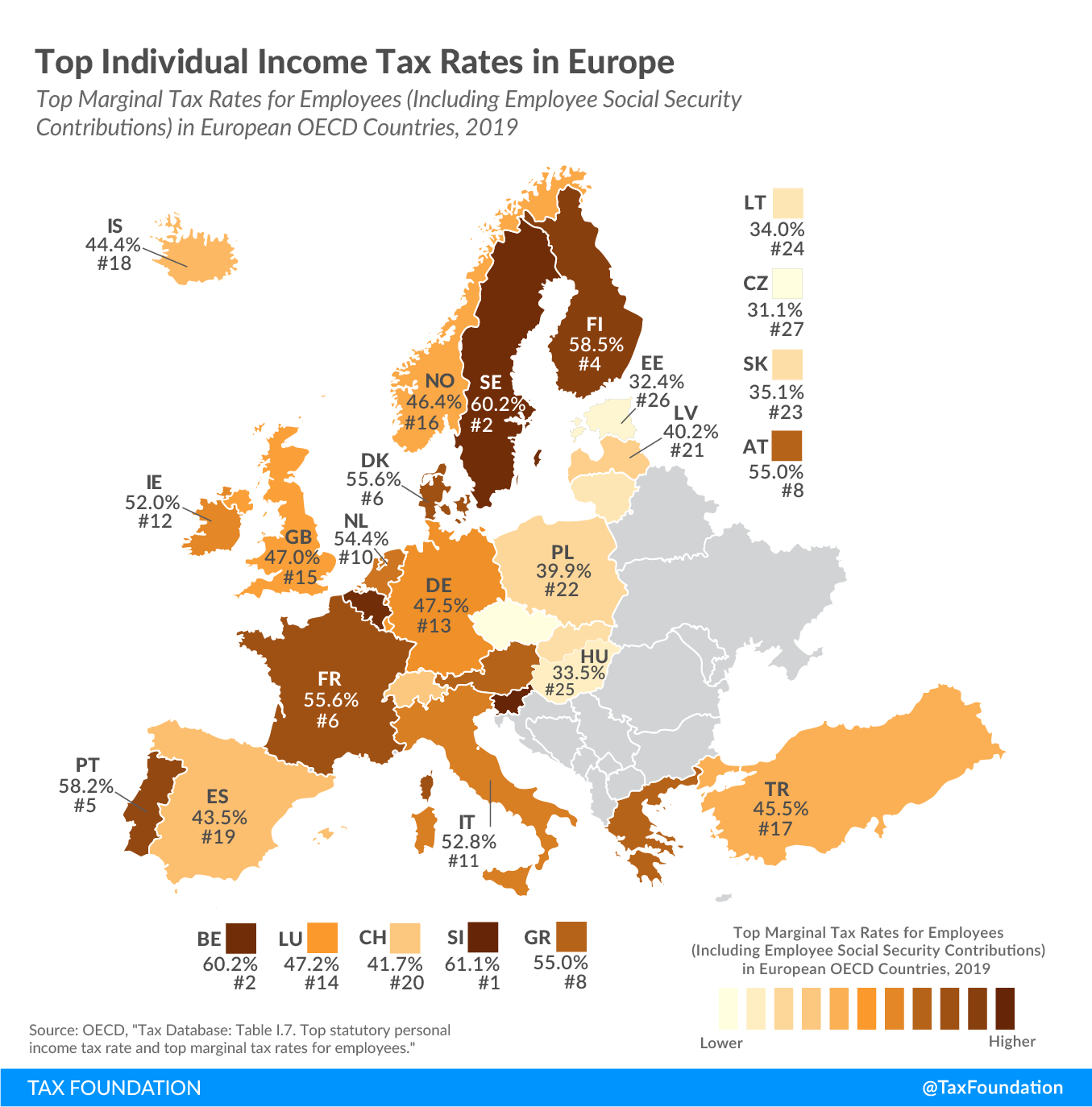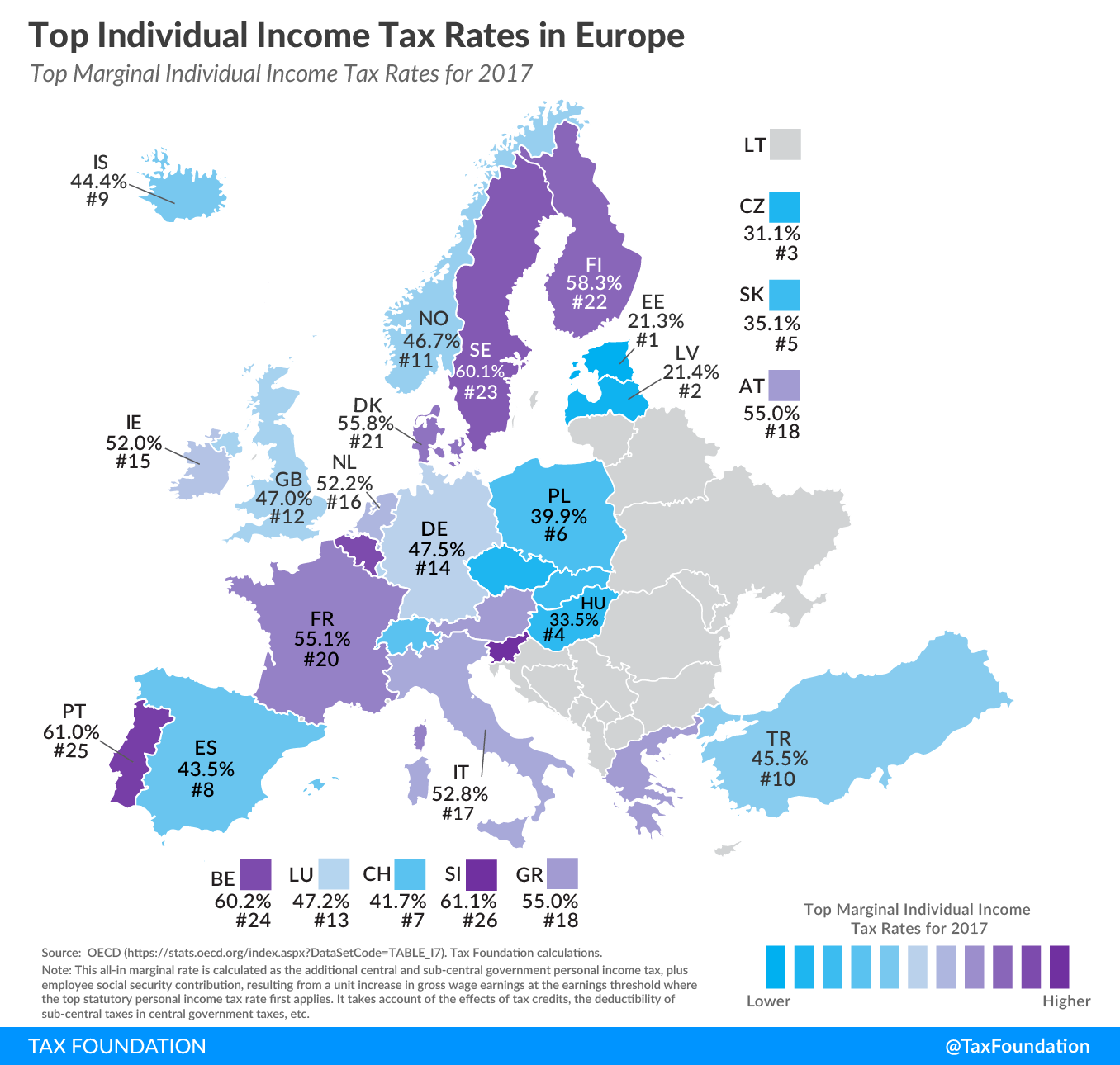
Most countries’ personal income taxes have a progressive structure, meaning that the taxA tax is a mandatory payment or charge collected by local, state, and national governments from individuals or businesses to cover the costs of general government services, goods, and activities. rate paid by individuals increases as they earn higher wages. The highest tax rate individuals pay differs significantly across European countries.
The top statutory personal income tax rate applies to the share of income that falls into the highest tax bracket. For instance, if a country has five tax bracketsA tax bracket is the range of incomes taxed at given rates, which typically differ depending on filing status. In a progressive individual or corporate income tax system, rates rise as income increases. There are seven federal individual income tax brackets; the federal corporate income tax system is flat. , and the top income tax rate of 50 percent has a threshold of €1 million, each additional euro of income over €1 million would be taxed at 50 percent.
Governments can generally generate revenue more efficiently by leveraging marginal tax rates at the lower end of the income distribution than by using higher top rates. This is because applying a higher rate to a tax bracket negatively affects the incentive to earn more or less income only for individuals in that bracket while also raising revenue from all taxpayers in higher brackets. In contrast, high top rates negatively affect the earning incentives of all individuals from whom they raise revenue.
2025 Top Personal Income Tax Rates in Europe
Top Statutory Personal Income Tax Rates in 35 Major European Countries, 2025
| Country | Top Statutory Personal Income Tax Rate |
|---|---|
| Austria (AT) | 55.0% |
| Belgium (BE) | 53.5% |
| Bulgaria (BG) | 10.0% |
| Croatia (HR) | 35.4% |
| Cyprus (CY) | 35.0% |
| Czech Republic (CZ) | 23.0% |
| Denmark (DK) | 55.9% |
| Estonia (EE) | 22.0% |
| Finland (FI) | 51.8% |
| France (FR) | 55.4% |
| Georgia (GE) | 20.0% |
| Germany (DE) | 47.5% |
| Greece (GR) | 44.0% |
| Hungary (HU) | 15.0% |
| Iceland (IS) | 46.3% |
| Ireland (IE) | 48.0% |
| Italy (IT) | 47.2% |
| Latvia (LV) | 36.0% |
| Lithuania (LT) | 32.0% |
| Luxembourg (LU) | 45.8% |
| Malta (MT) | 35.0% |
| Moldova (MD) | 12.0% |
| Netherlands (NL) | 49.5% |
| Norway (NO) | 39.6% |
| Poland (PL) | 36.0% |
| Portugal (PT) | 53.0% |
| Romania (RO) | 10.0% |
| Slovakia (SK) | 25.0% |
| Slovenia (SI) | 50.0% |
| Spain (ES) | 54.0% |
| Sweden (SE) | 52.3% |
| Switzerland (CH) | 39.7% |
| Turkey (TR) | 40.8% |
| Ukraine (UA) | 19.5% |
| United Kingdom (GB) | 45.0% |
Source: European Commission, "Taxes in Europe Database v4"; PwC, "Worldwide Tax Summaries - Personal Income Tax (PIT) Rates"; Bloomberg, "Country Profiles."
Among European OECD countries, the average statutory top personal income tax rate lies at 42.8 percent in 2025. Denmark (55.9 percent), France (55.4 percent), and Austria (55 percent) have the highest top rates. Hungary (15 percent), Estonia (22 percent), and the Czech Republic (23 percent) have the lowest top rates.
European countries that are not part of the OECD tend to feature lower rates and tax personal income at a single rate. Bulgaria and Romania (10 percent) levy the lowest rate, followed by Moldova (12 percent), Ukraine (19.5 percent), and Georgia (20 percent).
For comparison, the average combined state and federal top income tax rate for the 50 US states and the District of Columbia lies at 42.14 percent as of January 2025, with rates ranging from 37 percent in states without a state income tax to 50.3 percent in California.
Two European countries have increased their top personal income tax rates from last year. Estonia increased its flat income tax rate from 20 to 22 percent, while Latvia increased its top rate from 31 to 36 percent.
Other European countries are due for potential changes to their top personal income tax rates in the coming years. Austria is planning to eliminate its highest tax bracket in 2026, reducing its top income tax rate back from 55 percent to 50 percent. In Germany, the solidarity surtaxA surtax is an additional tax levied on top of an already existing business or individual tax and can have a flat or progressive rate structure. Surtaxes are typically enacted to fund a specific program or initiative, whereas revenue from broader-based taxes, like the individual income tax, typically cover a multitude of programs and services. —which increases the country’s top personal income tax rate from 45 to 47.475 percent—is currently undergoing judicial review.
Stay informed on the tax policies impacting you.
Subscribe to get insights from our trusted experts delivered straight to your inbox.
Subscribe
